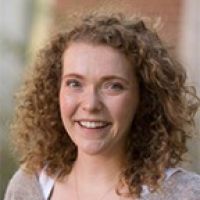Thompson et al., 2015
Delineating climatic regions where upland soil iron reduction is potentially important at the ecosystem scale
Thompson, A.; Hodges, C.; Chadwick, O. (2015)
American Geophysical Union Fall Meeting, December 2015, San Francisco, CA
-
Calhoun, Luquillo, INVESTIGATOR, COLLABORATOR
-
Calhoun, Shale Hills, GRAD STUDENT
-
National, ADVISORY BOARD
Abstract
Microbial iron(III) reduction is often coupled to carbon mineralization, resulting in net CO2 efflux from the soil profile. Recent reports of iron reduction in upland ecosystems suggests this process is not limited to flooded soils and sediments. However, quantifying ecosystem-scale iron reduction rates is challenging because the intermittent anoxia (low-oxygen) that facilitates iron reduction varies spatially throughout the landscape. To approach this challenge, we have measured the soil iron reduction potential using localized passive redox sensors across four climate gradients ranging from <600 mm y-1 to >4000 mm y-1 rainfall on soils derived from Hawaiian basalt aged 0.3 to 4,100 ky. At each site we installed ten iron metal-rods with a uniform surface coating of Fe(III)-oxyhydroxide. The rods were pushed into the soil to a depth of 90 cm and left in place for 14 d. Extracted rods were washed and imaged to quantify the fraction of Fe(III)-oxyhydroxide coating that was dissolved. In addition, we have characterized the iron mineral composition from surface and sub-surface horizons at similar sites using Mössbauer spectroscopy. Our results suggest that when annual rainfall exceeds 1800 – 2000 mm y-1, iron reduction is a common feature within the soil profile, regardless of soil age. In addition, we find that the pedogenesis of iron minerals proceeds along distinct trajectories above and below this iron reduction threshold.
Citation
Thompson, A.; Hodges, C.; Chadwick, O. (2015): Delineating climatic regions where upland soil iron reduction is potentially important at the ecosystem scale. American Geophysical Union Fall Meeting, December 2015, San Francisco, CA.
Explore Further



